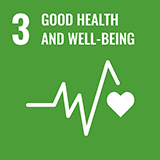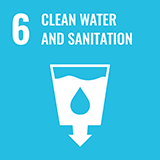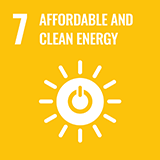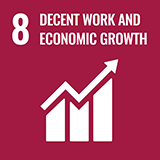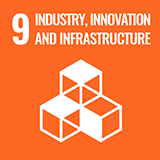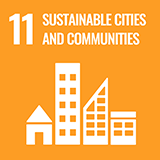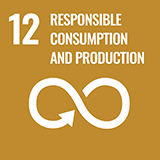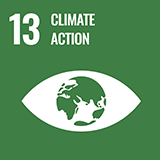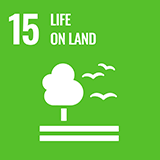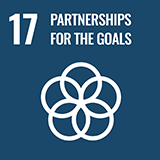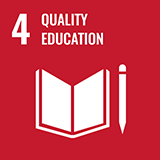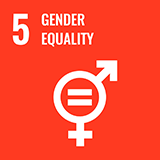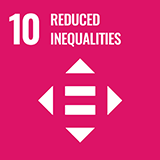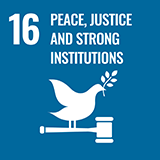Materiality / KPIs and Targets
Materiality
In 2019, the Tokyo Tatemono Group determined a number of material issues for the social issues identified in consideration of international issues (the SDGs) and domestic or industry-specific issues, evaluating their importance in terms of the magnitude of social needs and their affinity with our business.
Since 2020, we have been revising these material issues in order to achieve the Group long-term vision. This has been in response to major changes in the social landscape and people's values, such as with the COVID-19 pandemic. In the higher level realization of solving social issues and growing as a company set forth in the Group's long-term vision, we have identified 14 material issues from the perspective of both social value creation and value creation platforms, with an awareness of our shared values with society that we realize through our business.
Current Materiality Identification Process
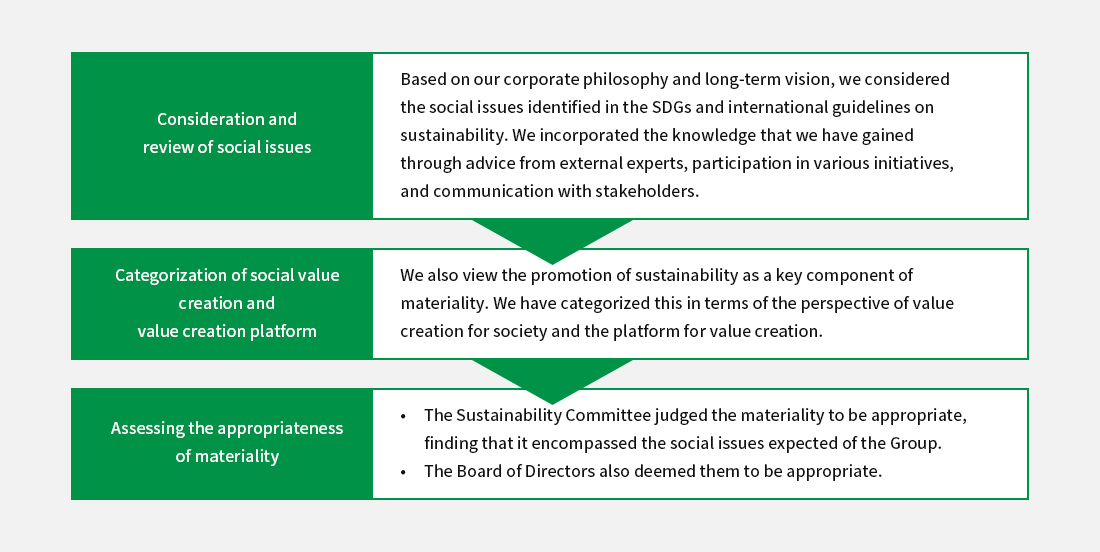
The Tokyo Tatemono Group will seek to develop solutions to these material issues through its business to maximize our positive impact (opportunities) on society while minimizing our negative impact (risks). In this way, we will help bring about a sustainable society while growing as a company.
Materiality of the Tokyo Tatemono Group
|
Material issues |
Shared values with society |
Contribution to SDGs |
|
|---|---|---|---|
|
Social value creation |
 Strengthening Tokyo's competitiveness as an international city |
Creating value of place and value of experience |
|
 Contributing to a safe and secure society |
|||
 Community building and revitalization |
|||
 Wellbeing |
|||
 Addressing the diverse needs of customers and society |
|||
 Value co-creation and innovation |
|||
 Social implementation of technology |
|||
 Revitalizing and utilizing real estate stock |
|||
 Promoting a decarbonized society |
Coexistence with the Earth and the environment |
||
 Promoting a recycling-oriented society |
|||
|
Value creation platform |
 Improve employee growth and job satisfaction |
Value-creating talent |
|
 Diversity & Inclusion |
|||
 Advancement of governance |
Realizing sustainability management |
||
 Strengthen risk management framework |
|||
Material Issue KPIs and Targets
The Tokyo Tatemono Group believes that promoting sustainability will help to maximize the medium- and long-term benefits for our stakeholders. We have set KPI and targets based on environmental and social material issues.
Regarding the environment, based on our material issue, promoting a decarbonized society, by fiscal 2030, we aim to reduce Scope 1 and 2 CO2 Emissions by 46.2% and Scope 3 emissions by 40%, compared to fiscal 2019 levels, and aim for net zero CO2 emissions by fiscal 2050. We have obtained SBT (Science Based Targets) certification for our fiscal 2030 target as being aligned with the 1.5°C pathway, which aims to limit the global average temperature rise to 1.5°C above pre-industrial levels. We have also set and are promoting goals related to the development of zero energy buildings and homes (ZEB and ZEH), shift to renewable energy, and acquisition of green building certifications as process goals to achieve medium- and long-term targets to reduce greenhouse gas emissions. We have also set targets based on the material issue, promoting a recycling-oriented society, and we have incorporated action plans into the business plans of each business division or business department to achieve these targets.
Regarding society, we have set targets based on the material issues of improving employee growth and job satisfaction and diversity and inclusion.
We have developed a PDCA cycle by monitoring the progress toward the targets at the Sustainability Committee.
In addition, the Board of Directors monitors and oversees the progress toward the targets.
Material Issue KPIs and Targets
Environmental
| Items | Scope of coverage | KPI and targets | Track records | Details Sustainability Report 2025 |
|||
|---|---|---|---|---|---|---|---|
| 2022 | 2023 | 2024 | |||||
|
Promoting a decarbonized society |
|||||||
| Reduction in greenhouse gas emissions | All businesses*1 | 【Scope 1, 2 and 3】 Net zero CO2 emissions by FY2050 |
CO2 emissions [Unit: t-CO2] |
1,015,172 | 984,407 | 1,406,137 | P.30 |
| 【Scope 1 and 2】 46.2% reduction in CO2 emissions compared to FY2019 levels by FY2030*3 |
CO2 emissions [Unit: t-CO2] |
72,213 | 44,283 | 43,450 | |||
|
Reduction rate compared to FY2019 [Unit:%] |
15.9 | 48.4 | 49.4 | ||||
| 【Scope 3*2】 40% reduction in CO2 emissions compared to FY2019 levels by FY2030*3 |
CO2 emissions [Unit: t-CO2] |
596,335 | 621,989 | 831,460 | |||
|
Reduction rate compared to FY2019 [Unit:%] |
1.8 | -2.4 | -36.9 | ||||
| Promotion of zero-energy buildings and homes*4 | Commercial Properties Business | Develop ZEB for, in principle, all new office buildings and logistics properties*5 | Percentage of ZEB developments [Unit:%] |
- (Not applicable) |
- (Not applicable) |
- (Not applicable) |
P.31 |
| Residential Business | Develop ZEH for, in principle, all new condominiums for sale or rent*6 | Percentage of ZEH developments [Unit:%] |
- (Not applicable) |
100.0 (Applies to 1 property) |
100.0 (Applies to 8 property) |
||
| Shift to renewable energy | All businesses*1 | Procure 100% of electricity consumed in business activities from renewable energy sources by FY2050 | Percentage of electricity from renewable sources [Unit: %] |
11.2 | 31.1 | 43.0 | P.30 |
| Commercial Properties Business | Procure 100% of electricity consumed at owned properties from renewable energy sources by FY2030 | 16.3*7 | 42.1*7 | 54.5 | |||
| Procure at least 50% of electricity consumed at owned properties from renewable energy sources by FY2024 | |||||||
| Acquisition of Green Building Certification*8 |
Commercial Properties Business Residential Business |
Acquire Green Building Certification for, in principle, all new office buildings, logistics properties, and condominiums for rent*9 | Percentage of green building certifications acquired [Unit:%] |
- (Not applicable) |
- (Not applicable) |
- (Not applicable) |
P.45 |
|
Promoting a recycling-oriented society |
|||||||
| Reduction of waste emissions | Long-term buildings*10 | By FY2030, 20% reduction in the rate of waste emissions intensity compared with FY2019*11 | Waste emissions intensity*12 [Unit:t/Thousand m2] |
5.3 | 5.3 | 5.3 | P.42 |
|
Reduction rate compared to FY2019*12 [Unit:%] |
28.4 | 28.4 | 28.4 | ||||
| Waste recycling promotion | Long-term buildings*10 | By FY2030, achieve a waste recycling rate of 90% | Waste recycling rate*12 [Unit: %] |
60.9 | 58.4 | 60.8 | P.42 |
| Reduction of water use | Long-term buildings*13 | Reduction of water use intensity compared to the previous year*14 | Water use intensity (YoY change) [Unit: m3/m2] |
0.76 (0.08) |
0.79 (0.03*7) |
0.84 (0.05) |
P.40 |
| Promotion of the use of recycled water | Office buildings with total floor area exceeding 30,000m2 | By FY2030, install gray water*15 treatment facilities at, in principle, all new office buildings with a total floor area of more than 30,000 m2 | Percentage of properties with gray water facilities [Unit:%] |
- (Not applicable) |
- (Not applicable) |
- (Not applicable) |
P.41 |
|
Promoting a decarbonized society / Promoting a recycling-oriented society |
|||||||
| Promotion of the use of wood materials | Long-term buildings, condominiums for sale or rent |
By FY2030, use domestic timber and certified timber in the interior and furniture of common areas of all new office buildings, for-sale and for-rent condominiums | Percentage of properties using domestic / certified timber [Unit:%] |
13.0*7 (Applies to 23 properties) |
7.1*7 (Applies to 14 properties) |
23.8 (Applies to 21 properties) |
P.33 |
| Condominiums for sale or rent | By FY2026, develop for-sale and for-rent condominiums that use timber for major structural components *16 | - | No developed properties | ||||
| Collaborating and Co-creating with Customers | Long-term buildings | Communicate with tenants about sustainability at least 4 times a year | - | Achieved | Achieved | Achieved |
P.34 P.42 |
| Condominiums for sale or rent | Communicate with residents and plan and implement sustainability measures | - | Achieved | Achieved | Achieved | ||
-
Applies to the Tokyo Tatemono Group.
-
Applies to Scope 3 categories 11 and 13.
-
In FY2019, CO2 emissions for Scope 1 and 2 were 85,870t-CO2 and Scope 3 (categories 11 and 13) were 607,511t-CO2.
-
In addition to "ZEB" and "ZEH(-M)", includes Nearly ZEB, ZEB Ready, ZEB Oriented, Nearly ZEH(-M), ZEH(-M) Ready, and ZEH(-M) Oriented.
-
Applies to new buildings for which design work began in January 2023 or later.
Excludes certain properties such as joint venture properties or properties with special uses. -
Applies to new buildings for which design work began in June 2021 or later.
Excludes certain properties such as joint venture properties or properties with special uses. -
Following a close examination of data, figures have been.
-
Mainly refers to, but is not limited to, DBJ Green Building certification, CASBEE building and BELS (Building Energy Saving Performance Labeling System) certification.
-
Applies to new buildings for which design work began in January 2023 or later.
Excludes certain properties such as joint venture properties or properties with special uses. -
Applies to the main long-term buildings and commercial facilities for which we have substantial energy management rights and for which we have submitted plans for the reuse and reduction of waste materials.
-
In FY2019, waste emissions intensity of production were 7.4 t/thousand m2. Waste emission intensity per 1,000 m2 of floor area.
-
From FY2024 the data collection period was changed to January to December. (Until FY2023 it was April to March.)
-
Applies to the main long-term buildings and commercial facilities for which we have substantial energy management rights.
-
Water use intensity per m² of shared floor area.
-
Recycled water derived from rainwater and miscellaneous wastewater generated in buildings (e.g., wastewater from cooling towers and tenants' kitchens). It is reused for non-potable purposes such as toilet flushing and watering plants.
-
This KPI/Target was newly set in 2024.
Social
| Items | Scope of coverage | KPI and targets | Track records | Details Sustainability Report 2025 |
|||
|---|---|---|---|---|---|---|---|
| 2022 | 2023 | 2024 | |||||
|
Improve employee growth and job satisfaction |
|||||||
| Promotion of skills development | Tokyo Tatemono | Average training time per employee: 15 hours or more each fiscal year | [Unit: Hours] | 15.8 | 15.2 | 16.0 | P.70 |
| Tokyo Tatemono | Career training participation rate: 100% each fiscal year | [Unit: %] | 100 | 100 | 100 | ||
| Promotion of health management | Tokyo Tatemono | Health check-up rate*1: 100% each fiscal year | [Unit: %] | 100 | 100 | 100 | P.73 |
| Follow-up test rate*1: 100% each fiscal year | [Unit: %] | 98.0 | 81.5 | 97.5 | |||
| Tokyo Tatemono | Smoking rate*2: 12% or less each fiscal year | [Unit: %] | 12.1 | 13.1 | 13.1 | ||
| Tokyo Tatemono | Percentage of employees maintaining an appropriate weight *1: 75% or more by FY2028 | [Unit: %] | 72.0 | 72.9 | 74.6 | ||
|
Diversity & Inclusion |
|||||||
| Respect for Human Rights | Tokyo Tatemono Group | Dissemination of the Human Rights Policy: Deployment to and compliance by group companies | - | Implemented | Implemented | Implemented | P.50 |
| Work-life balance | Tokyo Tatemono | Average annual paid leave utilization rate: 70% or more each fiscal year | [Unit: %] | 67.8 | 72.2 | 68.0 | P.77 |
| Tokyo Tatemono | Ratio of male employees taking parental leave*1: 30% or more by FY2025 | [Unit: %] | 50.0 | 78.1 | 84.2 | P.78 | |
| Promotion of Diversity in Our Workforce | Tokyo Tatemono | Ratio of women in management positions: 10% or more by FY2030 | [Unit: %] | 7.2 | 9.4 | 12.1 | P.79 |
| Tokyo Tatemono | Employment rate of people with disabilities*3: Over the legal employment rate each fiscal year (2.3% or more until March 2024, 2.5% or more from April 2024 to June 2026, 2.7% after July 2026) | [Unit: %] | 2.33 | 2.53 | 2.90 | ||
-
Totaled from April of each year to March of the following year.
-
At a specific point in time between April of each year and the following March.
-
As of June 1 of each year.
Stakeholder Engagement
The Tokyo Tatemono Group's business activities are supported not only by the customers who use our products and services, but also by many other stakeholders, including local communities, executives, employees, shareholders, investors, and business partners. We believe that building long-term relationships of trust with these stakeholders is essential to both our management and business activities. By engaging with our stakeholders and incorporating their opinions, expectations, and other input in various ways, we integrate their voices into the way the Group operates. Leveraging the continued trust of our diverse stakeholders enables our efforts to create social value and establish our value creation platform. To ensure the effectiveness of engagement with every stakeholder, we will review our approach and other aspects as necessary.
Stance on and Approach to Dialogue with Our Core Stakeholders
| Stakeholders | Stance on dialogue | Approach to dialogue |
|---|---|---|
| Customers Building tenants, home buyers, users of services |
We established various systems to incorporate customer feedback in our business activities. We use these systems to provide valuable products and services that offer safety and peace of mind, while continuously improving customer satisfaction. |
|
| Local community Local community around properties, local governments, NGOs, NPOs, educational institutions, etc. |
We work to increase local value and contribute to the local community through efforts that include community development and various community activities. |
|
| Executives and employees All personnel working for the Group |
We work to create a satisfying workplace in which employees can experience personal growth. We strive to develop people who are trusted and capable of building the future. |
|
|
Shareholders and investors |
||
| Those who support the Group's business by providing capital or by participating in management through the exercise of voting rights, among others | We aim to build long-term fiduciary relationships with our shareholders and investors and earn appropriate recognition through sincere and fair information disclosure and active communication. |
|
| Business partners Business operators related to planning, development, and property management, and service provision, etc. |
We conduct fair and equal business dealings with our partners and strive for close communications to build even better relationships with these partners. |
|

